 |
 |
|
A Manifesto for a New Walking Culture: 'dealing
with the city'
Full Company
with guest interventions by walking artists Richard Layzell, Bess Lovejoy, Fiona
Templeton and contemporaries of the Dada movement
Everyday
Walking Culture: The Sixth International Conference on Walking
in the 21st
Century, Zürich (2005)
Subsequently published in Performance Research, Issue 11.2 (June 2006)
View and/or download the text as a pdf here
Abstract
Drawing on the urban exploratory work of
our on-going Mis-Guide project and our use of the walking
'drift' or 'dérive',
Wrights & Sites presents a manifesto for the active and
creative pedestrian - envisioning a walking that is neither
a functional necessity (to shops, to work) nor a passive appreciation
of (or complaint about) the urban environment. Instead we present
a manifesto for a walking that engages with and changes the
city, particularly using the arts.
One of our key strategies is site-specificity: devising walkings
that are specific to their routes, to their surroundings. In
harmony with this we present our paper in a manner specific
to the Casino setting of the conference, dividing it into four
suits (as in a deck of playing cards). The order of presentation
of the material was determined by the shuffle of a deck of
cards by a croupier.
Each 'suit' of the manifesto has been written
by a different member of Wrights & Sites. In broad outline
these 'suits' have the following foci:
The walker as artist <-> the city as compositional
catalyst. Flirting with Dada (with its roots in Zürich's
Cabaret Voltaire and its emphasis on chance operations and
the production
of manifestos), this 'suit' explores connections between the
processes walking and artistic composition. [Clubs]
The walker as writer of the city. First
we change the way we 'read' the city: a set of new concepts
that will unbalance
the consciousness of the everyday walker and challenge the
dominant assumptions about walking and the city as a place
for walking. Then proposing a set of strategies (or 'fulcra')
for ways of re-writing the city, moving from changed perceptions
of the familiar city to the means to change its organisation,
uses, attitudes to and planning of public space. [Spades]
The walker as playful performer. Walking
as a means of playful reinvention, a 'making strange' of
the everyday. Remembering
our theatrical roots and that Brecht was an exile in Zürich
in 1947-1948, this suit considers the walker's performance
as a move out from the theatre towards a more open playing
space. [Hearts]
Disrupted walking as the new designing of
the city. How does
a new kind of walking engage with the planning of the city
and the powers that initiate and deliver it? Strategies for
a new walking, to become more like an active re-designing of
public place, generating a 'culture' that changes specific
spaces. The creative pedestrian as the new architect of the
city. [Diamonds]
In place of the 'court cards' (Jack, Queen, King)
of these suits, a number of guests have provided short interventions
into our manifesto. These are Richard Layzell [Hearts],
Bess Lovejoy [Diamonds], Fiona Templeton [Spades] and contemporaries
(or near contemporaries) of the Dada movement [Clubs].
Wrights & Sites would like to acknowledge
support from the Centre for Creative Enterprise & Participation,
Dartington College of Arts, the University
of Exeter and the University
of Winchester. Thanks also to Richard Feltham & Tony Weaver.
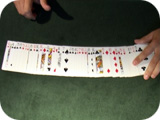
|
 |
|
 
'Our intent is to show walking not only as a directed movement from
one place to another, but a wandering, an odyssey of sight and
sound, a quest for knowledge and stimulation, a grand roaming expedition,
and a living breathing work of art in its own right.' (Lovejoy
& Morris 2005) |
| |
 |
|
 
WALK: Attempt to redress, in a
small way, the overabundance of hierarchical road signs
established
by our public servants.[1] 'They
may, for example, tell you that there is only "one way" to
navigate a particular area. Find
other
ways of walking, mapping and signing routes through these
public spaces.' (Wrights & Sites 2003: 46)
|
| |
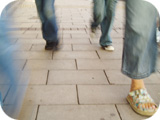 |
|
 
To combat the functionalism of walking by having no particular place to go. To
pick up on other walkers' varied paces from speedy to slow. To invent small
or secret dances at bus stops and on railway platforms. To invite people to
go for walks with you as a gift to be unwrapped with your feet. To use walking
as an opportunity to greet neighbours and to break long-established silences.
To write the city with your relationships. |
| |
 |
|
 
WALK: Abolish weather forecasts, [2] and consign the
umbrella to the dissecting table. [3] Don't physically or mentally 'wrap yourself
up against
all weathers'. Unlike most municipal tour guides and their followers, be prepared
to enjoy 'getting wet' along the way. |
| |
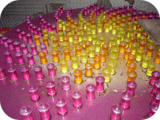 |
|
 
Guy Debord writes of the Situationist 'dérive' or
'drift', 'Written descriptions can be no more than
passports to this great game.' (Debord 1995 [1958]: 53)
We described
our first Mis-Guide as 'a forged passport to your "other" city.'
(Wrights & Sites 2003: back cover)
The passport gets us across a threshold, raises the curtain.
The text of a mis-guide designates the city as a real/imaginary
space of play.
Brecht wrote that the only passport needed by theatre
was fun: the invitation to a game. (Brecht 1964 [1949]:
180)
Our suggestions for walking make things strange, make
the city 'other', as if the lighting state has
suddenly altered. This is the half light, the
'candlelight' which,
in the children's rhyme, gets us to Babylon and
back.[4]
|
| |
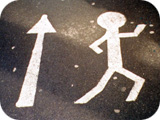 |
|
 
Is there any point in making walking safe if it only gets us to
the hospice more efficiently? |
| |
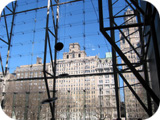 |
|
 
'Most daily life in the westernized world involves pod-based living,
from the home "pod" to the train or car "pod" to
the work "pod", creating a closed-in sensorium that
becomes one’s sole experience. This is the antithesis of
walking culture.' (Lovejoy & Morris 2005) |
| |
 |
|
 
To go shopping without the intention to buy and to view shopping
malls as hyper-real museums to consumerism. To travel the world
in a supermarket making atlases from imported food placed in
your basket or trolley. To write the city with conscious choices. |
| |
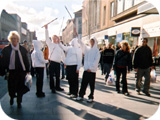 |
|
 
Hail the new citizen-octopus! - discovering sensations in the textures
and secrets of their city, a city disrupted to meet the needs
and desires of an evolving, mutating walking. Until the planners
mutate we cannot submit our dreams to their permission, until
then our plans will have momentum outside of legislation. |
| |
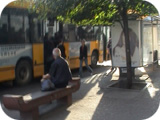 |
|
 
'This is a bus. They've only had buses in Tbilisi for three weeks.
And I haven't taken one because nobody's quite sure where they
go. It's much safer to walk.' [5] |
| |
 |
|
 
'Different languages and moods float by, intermingling with sounds
of industry, business, music, laughter, and the crying of children
and seagulls. As the walker is drawn in by a friendly face, a
startling art exhibit, or a secret path into strange lush grottos,
we follow their experiences and are drawn in as well.' (Lovejoy
& Morris 2005) |
| |
 |
|
 
'... to be a Dadaist means to let oneself be thrown by things,
to oppose all sedimentation; to sit in a chair for a single moment
is to risk one's life ...' (Huelsenbeck 1989 [1920]: 246) |
| |
 |
|
 
We aspire to games that are open to everyone, to the sky.
In Monte Carlo, I walked around the Grand Casino, fascinated
by its doorways, its steps and arches. Security guards quietly
hovered in the entrances. 'Members only' were invited up ornate
steps. In the entrance hall there were photographs of Salvador
Dali, kissing Princess Grace and speeding across the bay in
a boat with Walt Disney.
I felt more at home with the herd of decorated cattle wandering
the city centre: the Cow Parade, last seen in Manchester. Inelegant
tourists, dressed in hearts and daisies, they seemed to look
curiously at the casino, but remained sceptical.
|
| |
 |
|
 
Step on the cracks and find the gaps and make new tracks. Extend
your walking territory becoming more aware of the restrictions
being imposed upon you by signs and surfaces and the aggressive
armoured invasion of the car. Extend your experience by habitually
eroding the controls of speed and commerce. Walk a new walking
culture to write the city with your bodies. |
| |
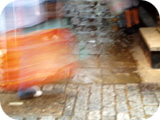 |
|
 
To give a word to each footstep so that a walk becomes a story
or poem. To re-enact particular walks and styles of walking that
you have found in books, plays and films and to write the city
with your own associations. |
| |
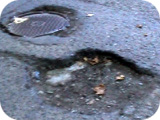 |
|
 
'Somewhere here, six years ago, I broke my foot. But, when you
break your foot, the hole is not the thing you remember. And
it was dark. And I said I can walk in the dark, but I wasn't
bargaining on the holes in the streets of Tbilisi.' [6] |
| |
 |
|
 
WALK: Abolish habitual walking patterns, [7]
such as the home-to-work-and-back routine: those head-down journeys
when the mind is focused elsewhere and 'elsewhen'. Walking artists,
Lone Twin, for example, disrupted the byways of Colchester by
carrying a telegraph pole in a straight line across the city,
right through houses and shops, in their piece Totem (1998).
'I think we should get into the river ... and walk from one side
to the other,' he said, Gary to Gregg. (Lone Twin 2001: 2) |
| |
 |
|
 
To insist upon the rights of the pedestrian over the car. To dream
of the day when you do not have to say 'Mind the road' to children.
To continue laying flowers at the sites of pedestrian road accident
fatalities. To regard wheelchair users as walkers not separate
from ped-estrians. Take a chair into the Shopping Mall to see
this point of view / this viewpoint. Break the taboo and travel
by wheelchair for a day. To write the city with Human Rights. |
| |
 |
|
 
Every walk is a potential planning - we can be planners or we can
be artist's impressions. |
| |
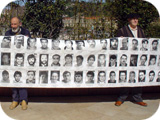 |
|
 
Babylon is a dangerous place. Walking is the exercise of a freedom
that does not exist everywhere or at all times or for all people.
It is the exercise of a freedom to re-make the space by the ways
in which we live it, perform it, play it. |
| |
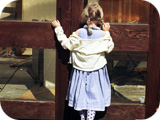 |
|
 
We demand the right to linger. We are loiterers without intent.
We are children taking the long way home from school. |
| |
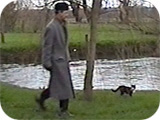 |
|
 
'I think walking as part of my practice crept up on me: it was
happening before I realised it.' [8] |
| |
 |
|
 
To re-value public space with an eye more akin to the musings and
perceptions of children so that we might gain a deeper insight
into the poetics of space, inviting children's participation
in the planning of their environments. To hold meetings, discussions,
readings, and vigils on traffic islands or to make decisions
on foot and on the streets instead of in airless committee meeting
rooms. To write minutes, musings and decisions on paving stones. |
| |
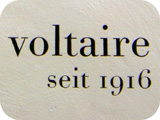 |
|
 
'Leave everything. Leave Dada. Leave your wife. Leave your mistress.
Leave your hopes and fears. Leave your children in the woods.
Leave the substance for the shadow. Leave your easy life, leave
what you are given for the future. Set off on the roads.' (Breton
1978 [1922]: 166) |
| |
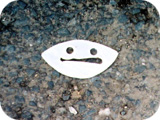 |
|
 
We might change the meaning of 'excess' - from 'rubbish tip' to
'moving without a destination' - every seventh sign in our city
will be a mystery, a metaphor or an absurdity. |
| |
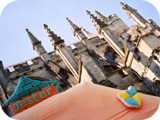 |
|
 
In every city we will set up a Tourist Misinformation Office -
to tell the truth about the city... to invite our visitors to
re-make the city rather than consume it - we will stop tidying
ruins and lighting the night sky, we will encourage public art
to be made by the public - this will be funded by a subsidy equivalent
to the city's spending on tranquilisers,
weapons and automobiles. |
| |
 |
|
 
'Now it's integrated into designing major events for 150 people to walk silently through a major city.' [9] |
| |
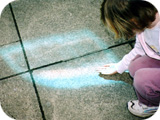 |
|
 
One architect-walker dreams of a city as delicate as flesh - where
bodies are respected as pillars of stone once were. This architect
will design the next landscapes as extended human organs. |
| |
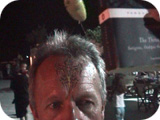 |
|
 
'Walking was becoming an art-form without really intending it to be.' [10] |
| |
 |
|
 
Amble, ramble and de-ramble the city in search of wildlife, ancient
tracks, sacred signs and paths of desire and to fill abandoned
roadside cars with earth and turn them into immobile gardens.
To celebrate the growth of weeds, plants, flowers in the most
hostile urban zones. To follow the journeys of insects as your
guides. To write the city with cobwebs, tendrils and minute flora
and fauna. |
| |
 |
|
 
WALK: Abolish industrially-produced maps. [11]
Walking can facilitate the construction of new, more personalised
maps, as in the case of Daniel Belasco Rogers' The daily
practice of map making. He's been using a handheld GPS device
to record all of his journeys since April 2003. [12] 'If
at the end of your life, you could look at the shapes your wanderings
over the earth have made, what patterns would you see? What words
may be formed that take a human lifetime to write?' he said in
his piece Unfallen (2003). |
| |
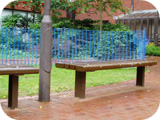 |
|
 
To invite town planners on practical courses exploring trespass
and paths of desire. To adopt public places for sitting as if
they are an extension of your home and to recognise and respect
the people whose furniture is the street. To write the city with
your presence. |
| |
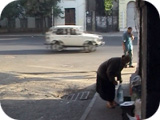 |
|
 
'This is another dangerous spot to walk because usually there's
water coming out of this spout here - because they don't really
have gutters. It just pours out onto the street. So, I'm going
to walk under it for safety - behind it.' [13] |
| |
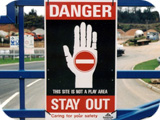 |
|
 
Communists of international distinction have no business in our
country any longer. Just because it is more comfortable to live
in ... bourgeois Switzerland is no reason to let such foreigners
take root here.
(Zürich foreign police, cited in Honegger 2005: 109)
And so the Zürich police refused a residence permit to
Bertolt Brecht: his games were shifted elsewhere, his letters
left in a forgotten suitcase, like so many others all over
Europe. In spite of international terrorism, we propose to
keep welcoming strangers.
|
| |
 |
|
 
WALK: Believe absolutely that every walker
is a potential mis-guide, every walk leads to anywhere. [14] |
| |
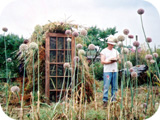 |
|
 
Another architect-walker will design a city of ideas where beliefs
and differences of opinion blow the flags on an invisible town
hall - yet another lets nature in, leaves spaces for miniature
wildernesses, designs a monument to the glacier, wave or asteroid
that will one day destroy us. |
| |
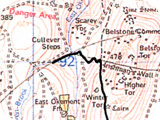 |
|
 
WALK: Abolish ETAs, predetermined destinations
and thoughts of artistic outcomes. [15] Forget
the future as you walk. Leave your watch at home. Drift for three
or four months
at a time as the psychogeographer, Ivan Chtcheglov, claimed to
do. Like the artist, Richard Long, let the walk become the work.
'To walk a line is the easiest thing a human being can do to
put his [her] mark on a place,' he said. (Long 1991: 27) |
| |
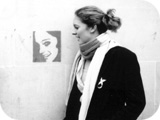 |
|
 
Playfulness, disruption, gifts left for strangers, the sharing
of visions, intelligent flash-mobbing, provocations at the tipping
points of cities, making a scene so that the city performs itself,
mis-guided tours, wireless on-line technology - combining phone,
movie, digital design, camera, editing desk and ipod - sending
routes, signs and stories in waves across spreading networks
of uncontrollable walking, maps of atmospheres and basins of
attraction, and festivals celebrating the reflections in windows
and the glints in pedestrians' eyes - these are the instruments
of the architect-walker - extraordinary changes will begin with
disruptions in the ordinary. |
| |
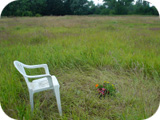 |
|
 
Between one thing and another there hangs a curtain: let us draw
it up!
(Brecht 1964 [1949]: 189)
|
| |
 |
|
 
'If you are ready to leave father and mother, and brother and sister,
and wife and child and friends, and never see them again - if
you have paid your debts, and made your will, and settled all
your affairs, and are a free man - then you are ready to go for
a walk.' (Thoreau 1994 [1862]: 4) |
| |
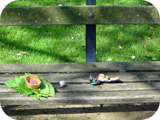 |
|
 
A 9 year old is quoted as saying: 'The most favourite game played
in school is "Schools".' (Opie and Opie 1984: 333)
As we walk the city, we like to play a game of 'cities'. |
| |
 |
|
 
The pavements are our sinhaz, our stadtteater, our Institute of
Contemporary Arts. |
| |
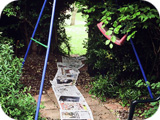 |
|
 
Wir wollen in den Garten gehn,
Wenn nur der böse Geist nicht war!
(German children's rhyme, cited in Opie and Opie 1984: 109)
|
| |
 |
|
 
WALK: Protest with your feet. [16]
|
| |
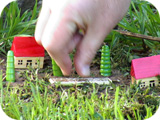 |
|
 
WALK: Acquaint yourself with methods
of urban exploration rejected by the good manners of the heritage
and tourism industries. [17] 'What
happens if you overlay a map of Moscow onto your own city? What
do you find where the Kremlin
should be? Look for coincidences or references to Russia. Stop
in bars and drink vodka. What about Baghdad? ...' (Wrights & Sites
2005) |
| |
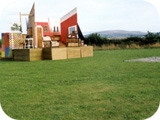 |
|
 
On 9th November, 1947, the exiled Bertolt Brecht was in Zürich
and drafted, with others, a manifesto for peace. While here, he
also wrote his 'Kleines Organon für das Theater' (Brecht 1964
[1949]) in which he wished for a theatre that could help to change
the world. We share Brecht's impulse to make the familiar strange,
to engage in the movement of the world, to be flexible, to be open.
However, in our work together, we have drawn different conclusions,
finding it necessary to abandon the theatre space, however makeshift
and temporary, and to walk with people, rather than perform in
front of them. The acquisition of a theatre (as Brecht knew, or
was to find out) is enmeshed in the conquest of territory. We wanted
none of it. |
| |
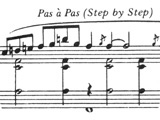 |
|
 
WALK: Abolish the Desk, home to scratching
nibs and physical and mental stasis. [18] Erik
Satie, for example, the only musician permitted access to the
Dada 'club', used to
compose during his daily walks to and from the centre of Paris,
pausing under lamp-posts at night to write down his thoughts.
Listen to his music and you will hear his footsteps. 'Before
I compose a piece, I walk round it several times, accompanied
by myself,' he said. (Satie 1980 [1913]: 79) |
| |
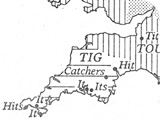 |
|
 
On Iona and Peter Opie's map, (Opie and Opie 1984: 67) our city,
Exeter, is replaced with the word 'Hit', while Dartmoor becomes
'Catchers'. North Devon is marked 'TIG'; Plymouth and Helston
are both 'It' and Penzance becomes 'Hits'. This map of children's
words for chasing games transforms the territory into the space
of play we know it to be. We sneak into the grown-up spaces and
steal our fun from under municipal noses:
König, ich bin in deinem Land
Ich stehl dir Gold und Silbersand.
(German chasing rhyme, cited in Opie and Opie 1984: 86)
|
| |
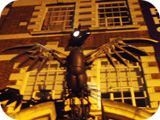 |
|
 
To reclaim the nights in the city. Walking through the streets
at the dead of night is not a criminal offence. Insomniacs should
not be made to feel guilty for being up and about. Walk where
streets have become ghost corridors for somnambulists. |
| |
 |
|
 
Anyone, anywhere can be an architect-walker - begin by having the
time of your life mapping atmospheres and feelings - they are
our foundations as we build from ideas and emotions outwards... |
| |
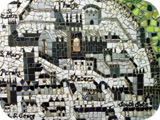 |
|
 
To walk with a sense of not knowing anything about the city. To
walk as a constant experiment to discover the intricacies and
individuality of your walk that is as distinctive as your handwriting.
Now the city would move like a map you were drawing; now you
would begin to live your life like a book you were writing.
Called forth by a street or a building, an ensemble of gestures
might imply that a different street had to be found, that a
building could be redesigned by the gestures performed within
it, that new gestures had to be made, even that an unknown
city had to be built or an old one overthrown...
(Marcus 1990: 166)
|
| |
 |
|
 
WALK: Know that every object, all objects,
feelings and obscurities, every apparition and the precise shock
of parallel lines, are potential material for an artwork. [19]
As you walk, gather found material, record the stories of the
people that you encounter, encourage personal associations, generate
mythogeographies, look for the extra-ordinary in the seemingly
ordinary... |
Notes
[1] See Tristan Tzara, Dada Manifesto 1918,
originally read in the Salle Meise, Zürich, 23 March 1918
(1992 [1918]: 13): 'DADA; every hierarchy and social equation established
for values by our valets'.
[2] See Tzara (1992 [1918]:
13): 'DADA; the abolition of prophets'.
[3] A reference to Lautréamont's oft-quoted,
pre-Surrealist statement from Maldoror (1868-1869):
'As beautiful as the chance
meeting on a dissecting table of a sewing machine and an umbrella.'
[4] The rhyme goes as follows:
'How many miles to Babylon?
Three score and ten.
Can I get there by candlelight?
Yes, and back again.'
[5] This text by Fiona Templeton
was accompanied by a video extract of a research walk around Tbilisi (2005).
[6] This text by Fiona Templeton
was accompanied by a video extract of a research walk around Tbilisi (2005).
[7] See Tzara (1992 [1918]:
13): 'DADA; the abolition of memory'.
[8] This text by Richard
Layzell was accompanied by a video extract of Walking in Circles (research
in Wargrave, UK, 1999).
[9] This text by Richard
Layzell was accompanied by a video extract of Sense Walk (Bristol,
UK, 2005).
[10] This text by Richard
Layzell was accompanied by a video extract of Talking to Tania 1 (Skyros,
Greece, 2004).
[11] See Tzara (1992 [1918]:
13): 'DADA; the abolition of archaeology'.
[12] See http://planbperformance.net/works/lifedrawing/ for
further information.
[13] This text by Fiona
Templeton was accompanied by a video extract of a research walk around Tbilisi
(2005).
[14] See Tzara (1992 [1918]:
13): 'DADA; the absolute and indiscutable belief in every god that is an immediate
product of
spontaneity'.
[15] See Tzara (1992 [1918]:
13): 'DADA; the abolition of the future'.
[16] See Tzara (1992 [1918]:
13): 'DADA; protest with the fists of one's whole being in destructive action'.
[17] See Tzara (1992 [1918]:
13): 'DADA; acquaintance with all the means hitherto rejected by the sexual
prudishness of easy
compromise and good manners'.
[18] See Tzara (1992 [1918]:
13): 'DADA; abolition of logic, dance of those who are incapable of creation'.
[19] See Tzara (1992 [1918]:
13): 'DADA; every object, all objects, feelings and obscurities, every apparition
and the precise
shock of parallel lines, are means for the battle of'.
References
Brecht, Bertolt (1964) [1949], 'A Short Organum for the Theatre',
in Brecht on Theatre, trans. and ed. John Willett, London: Methuen,
pp. 179-208.
Breton, André (1978) [1922], 'Leave Everything', in Dada and Surrealism Reviewed,
Dawn Ades, London: Arts Council of Great Britain, p. 166.
Debord, Guy (1995) [1958], 'Theory of the Dérive', in Situationist
International Anthology, trans. and ed. Ken Knabb, Berkeley (USA):
Bureau of Public Secrets, pp. 50-54.
Honegger, Gitta (2005), 'Brecht, Switzerland, and the Hunt for
the Lost Suitcase', Theater, 35: 1, March, pp. 109-113.
Huelsenbeck, Richard (1989) [1920], 'Collective Dada Manifesto',
in
The Dada Painters and Poets: An Anthology, ed. Robert Motherwell,
Cambridge (Massachusetts) and London: The Belknap Press of Harvard
University Press, pp. 242-246.
Lone Twin (2001), of Pigs & Lovers: A Lone Twin Research Companion, London: Arts Council England.
Long, Richard (1991), Walking In Circles, London: Anthony d’Offay Gallery.
Lovejoy, Bess & Damon Morris (2005), Going Anywhere, unpublished
artists' statement of intent.
Marcus, Greil (1990), Lipstick Traces, A Secret
History of the Twentieth Century, London: Secker & Warburg.
Opie, Iona and Peter Opie (1984), Children's
Games in Street and Playground, Oxford and New York: Oxford University Press.
Satie, Erik (1980) [1913], 'Erik Satie', in The Writings of Erik Satie,
trans. and ed. Nigel Wilkins, London: Eulenburg Books, p. 79.
Thoreau, Henry David 1994 [1862], Walking,
San Francisco: HarperSanFrancisco.
Tzara, Tristan (1992) [1918], Seven Dada Manifestos
and Lampisteries,
trans. Barbara Wright, London, Paris and New York: Calder Publications.
Wrights & Sites (2003), An Exeter Mis-Guide, Exeter (UK): Local
Heritage Initiative/Arts Council England.
- (2005), unpublished draft for A Mis-Guide to
Anywhere (to be published 2006).
View and/or download the text as a pdf here.
|
|
|
 |
 |
|





















































